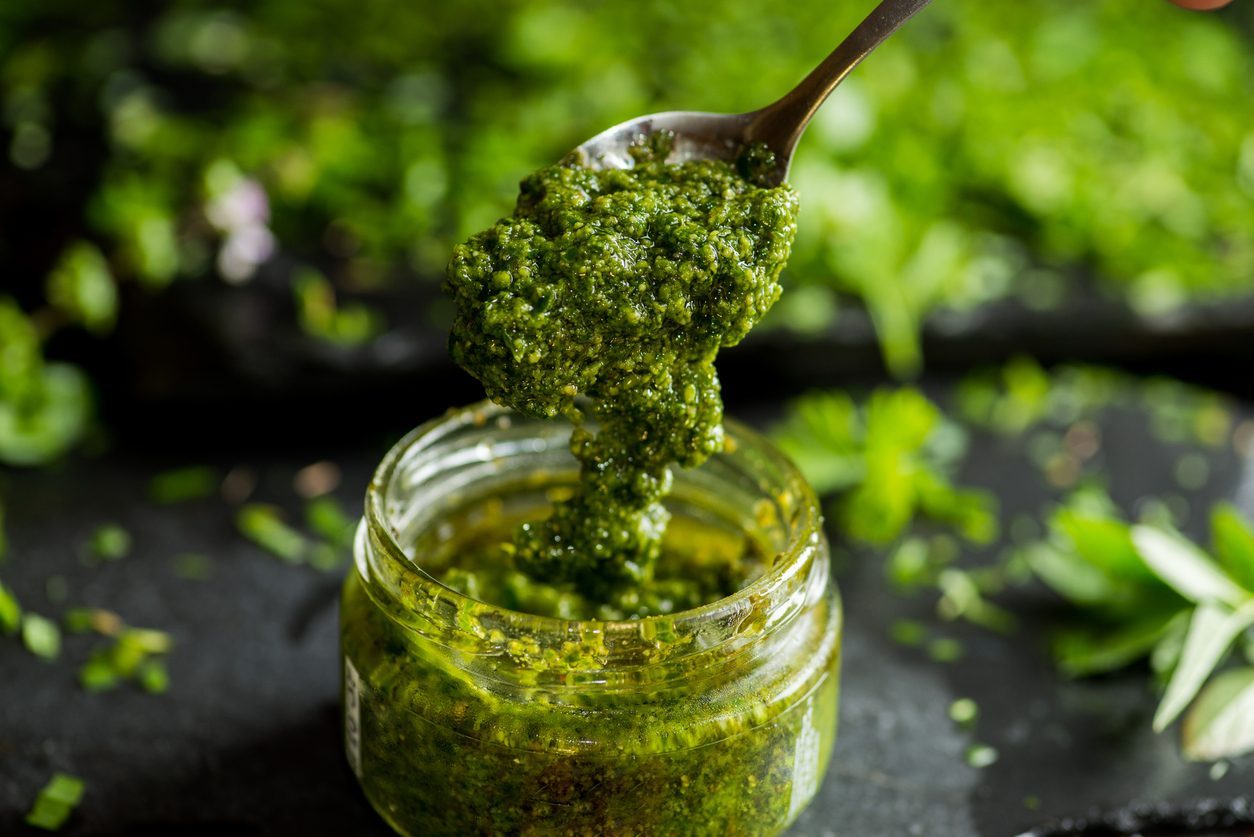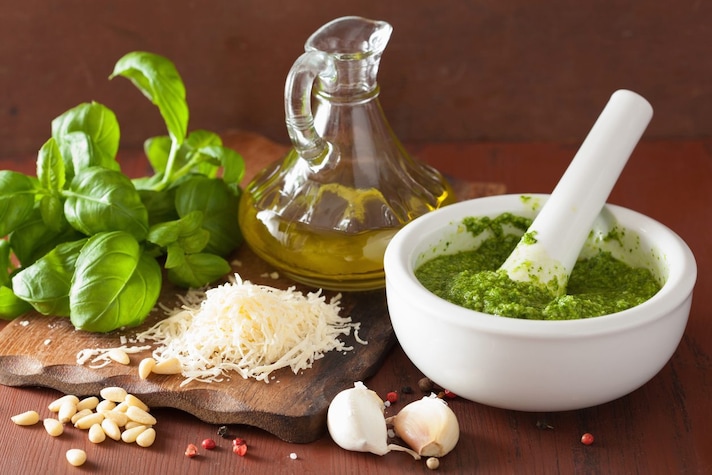Why You Should Never Heat or Cook Pesto
Among the most beloved condiments of Italian cuisine, pesto is more than just a sauce: it is a symbol of tradition, especially that of Liguria. An excellence to be preserved and enhanced, which is why you must learn its main rule of use: never heat pesto. Here's why.
;)
An intense green sauce, with a fresh and decisive flavor, but delicate at the same time, based on few ingredients but which, combined together, are an explosion of flavor for the taste buds: it is pesto, an excellence of Genoese gastronomy but now so loved that it has far surpassed the borders of the Ligurian city, to the point of becoming a true symbol of all Italian cuisine. With pesto, also easy to prepare at home, you can do practically everything, from seasoning pasta to preparing bruschetta simply by spreading it on bread, but on one condition: you have to treat it in the right way. This means knowing how to store it properly, but also knowing the fundamental rule to fully enjoy its excellent organoleptic properties: pesto should never be heated or used hot, you should always and only use it at room temperature. Why? We'll explain it to you.
Why Should You Never Heat Pesto?
Basil, pine nuts, garlic, parmesan, pecorino and extra virgin olive oil: pesto is a cold sauce made with fresh ingredients and the answer to why you should never heat them on the stove or use them hot, always and only cold, is found in the foods that compose it. In particular, there are two ingredients that would be ruined by heat: basil and oil. Basil, which is essential for making pesto, is particularly sensitive to heat: heating it, even if crushed, first of all causes oxidation, making it dark and unappealing, but it also ruins its characteristic aroma. In fact, heat can also reduce the fragrance of the essential oils present in basil, compromising the taste of the sauce.

Extra virgin olive oil, another key component, could have some problems when in contact with heat: when exposed to high temperatures, in fact, it could lose its nutritional properties and its aromatic profile, altering the balance of flavor that characterizes the pesto. Added to all this is the presence in the sauce of the two cheeses, grated parmesan and pecorino: both, in contact with heat, would end up creating a lumpy consistency that would ruin the texture of the sauce.
To preserve the integrity of the pesto in terms of taste and consistency, you should never heat it or use it directly on the stove: it should be added to any dish always and only away from the stove and stirring until it is evenly distributed. And if you had the jar of pesto in the refrigerator (or even in the freezer) and it is too cold, you just need to take it out in time and let it come to room temperature naturally.
Can Pesto Be Eaten Raw?
Absolutely! Pesto is designed to be consumed raw. Eating pesto raw is the best way to enjoy the full expression of its fresh, herbal flavors and health benefits. The raw garlic in pesto also provides a pungent kick that complements the creamy nuts and cheese, making it a delightful addition to any dish without the need for cooking.
Should You Just Stir Pesto Into Dishes?
The ideal way to incorporate pesto into hot dishes, like pasta, is to stir it in after the cooking process is complete. For example, once your pasta is cooked and drained, you can add pesto to the warm pasta off the heat. This method warms the pesto gently without subjecting it to direct heat, preserving its color, flavor, and nutritional integrity.
;Resize,width=767;)
;Resize,width=712;)

;Resize,width=712;)
